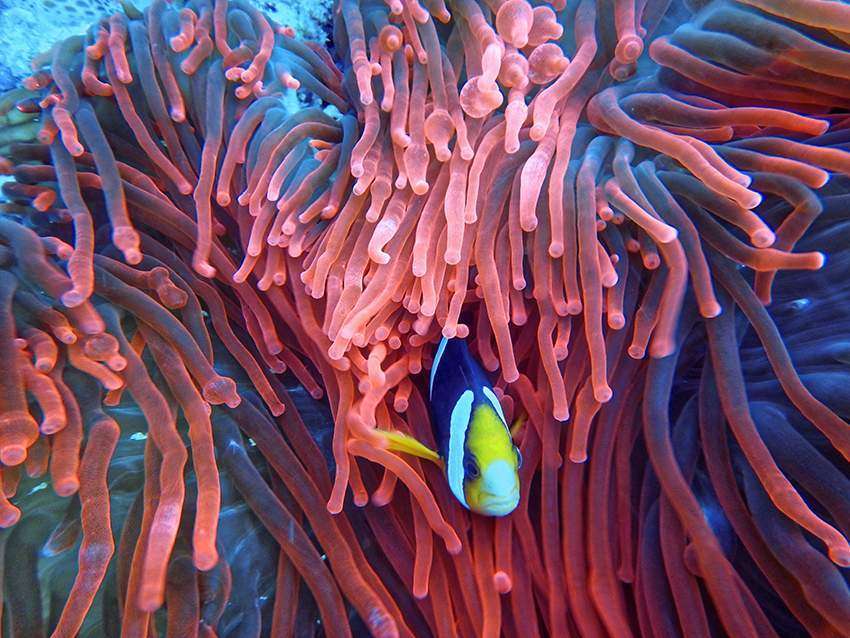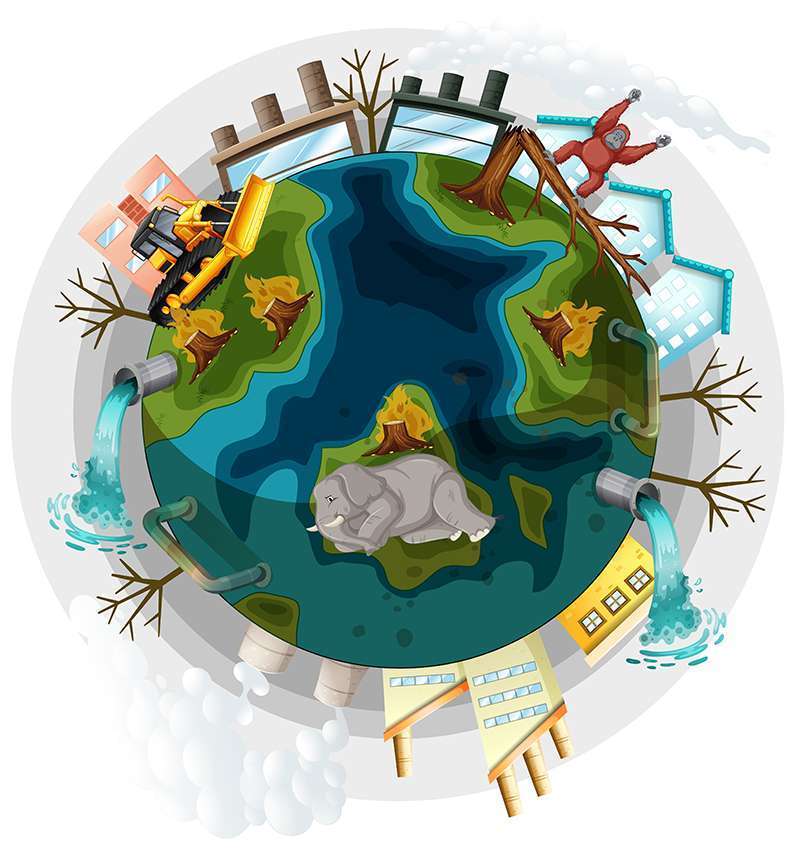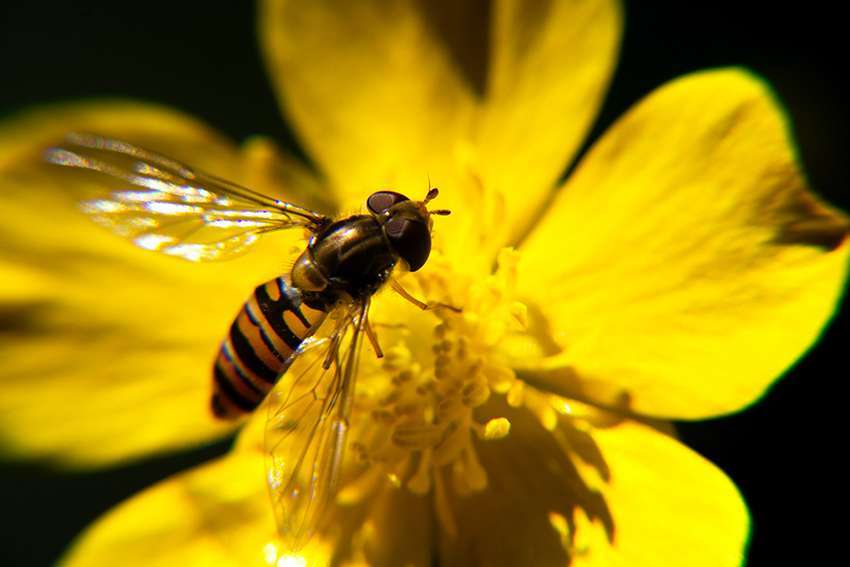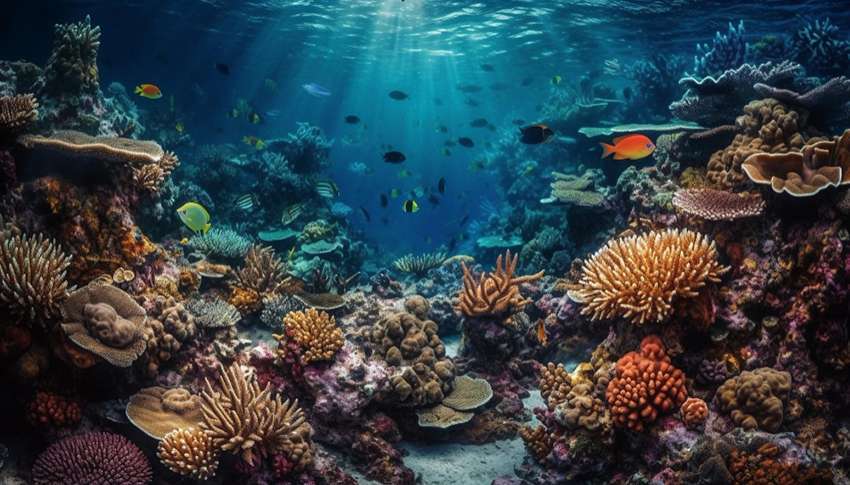Index:
- Why Does A Thriving Planet Need Biodiversity
- A Thriving Planet With Biodiversity And Economic Growth
- Integrating Biodiversity Into Sustainable Production And Consumption
- Biodiversity And Human Well-Being For Sustainable Development
- Biodiversity And Climate Action For A Thriving Planet
- Biodiversity And Gender: Contributing To A Thriving Planet
- Biodiversity And Clean Water
- Biodiversity And Sustainable Living
- Biodiversity In Ocean And Land For A Thriving Planet
- Biodiversity And Sustainable Cities For A Thriving Planet
- Biodiversity And Poverty Alleviation For A Thriving Planet
- Biodiversity And Energy For A Thriving Planet
- Biodiversity And Global Partnerships
- Moving Forward
- Why Is It Essential That We Focus On Biodiversity For A Thriving Planet?
- Achieving The United Nations Sustainable Development Goals (SDGs)
- A Thrivable Framework
Why does a thriving planet need biodiversity?
A thriving planet relies on biodiversity as a fundamental pillar for its survival. Biodiversity refers to the variety of life forms, including plants, animals, and microorganisms, inhabiting the Earth. It encompasses the diverse ecosystems and ecological processes that sustain life. Biodiversity is crucial. The loss of a single species within an ecosystem can trigger a chain reaction, leading to tipping points where the entire ecosystem is thrown off balance, with devastating effects. If these are too great, it can lead to mass extinctions of vast populations. For example, if coral bleaching killed all the coral in The Great Barrier Reef, every other species that relied solely on the reef structure would be at risk as well. These cascading impacts highlight the interconnectedness of species within the intricate web of life.

Source: Pexels.
Biodiversity also contributes to essential services such as food production, water purification, climate regulation, and disease control. It also enhances the resilience of ecosystems, making them more adaptable to environmental changes. However, human activities, such as habitat destruction, pollution, climate change, and introductions of invasive species, are collectively destroying biodiversity approximately 1000 times faster than the natural baseline rate (Al-Delaimy et al., 2020).
The Biodiversity Outreach Cluster consists of dedicated individuals who are driven to protect and restore the incredible diversity of species that make our planet so extraordinary. Through scientific research, conservation efforts, and community engagement, we strive to create a thriving planet where all species and ecosystems flourish and where humanity coexists harmoniously with nature.
A thriving planet with Biodiversity and Economic Growth
Widespread decline of biodiversity generates significant risks to the economy, financial sector, and the well-being of current and future generations. Halting and reversing biodiversity loss requires policy guidance. This guidance should inform Finance, Economics and the Environment to underpin transformative domestic and international action. The priority action areas for governments should be to adapt measures of national performance which reflect natural capital, and mainstream biodiversity through better strategies, plans, policies, and projects. Second, there should be improved leveraging of fiscal policy and economic instruments, in order to support the conservation of biodiversity, including COVID-19 recovery packages. Third, policies should integrate nature-related dependencies, risks and impacts into the financial sector. Fourth, to improve biodiversity outcomes linked to trade by reforming environmentally harmful and market-distorting government support (OECD, 2021).
Integrating Biodiversity into Sustainable Production and Consumption
Biodiversity loss and ecosystem degradation are among the greatest systemic risks for global economics, human health, and the possibility of a sustainable planet. Policymakers must assume the leading role in tackling this issue. They must integrate protection and restoration of biodiversity and ecosystem services into all policy agendas and all levels of government. Governments must develop green economies, through a set of recommendations and concrete entry points for action. These will build momentum for addressing biodiversity issues in the international policy arena. They’ll also improve transparency and circularity in value chains, as well as promote sufficiency-oriented behaviours (One Planet, 2022).

Source: Freepik.
Biodiversity and human well-being for sustainable development
The drive towards more sustainable development pathways highlights the importance of properly conceptualising and communicating the link between biodiversity and human well-being. For biodiversity, the key considerations are genes, traits, species, and other dimensions. The considerations for human well-being (HWB), are primarily health, wealth, and security, among others. The general understanding is that the value of biodiversity as an external commodity may influence HWB. However, biodiversity is fundamental to HWB. Sustainable development frameworks should include biodiversity explicitly as a suite of internal variables that influence and are influenced by HWB. Doing so will enhance our own clarity and help us shape coherent research and policy priorities.
Biodiversity, ecosystem functioning, ecosystem services and human well-being are widely used terms, however their definitions unfortunately greatly vary among different sectors, sometimes generating confusion. Biodiversity is commonly defined as the variability among living organisms. This variability comes from a wide variety of sources. Some include taxonomic, phylogenetic, and functional diversity and the ecological complexes of which they are part. Every ecosystem features key functions such as primary production and nutrient cycling. These give rise to ecosystem services that improve HWB, such as the provisioning of clean water, fertile soils, timber, and capture fisheries (Naeem et al., 2016).
Biodiversity and Climate Action For A Thriving Planet
Communities are increasingly vulnerable to climate change. The effects of climate change may push ecosystems to undergo irreversible changes. Climate change is already triggering the mass loss of biodiversity, and this is especially true for plant species, mammals, birds, and fish species. To protect the life on our planet, it is critical to conduct more research related to nature-based solutions, examining all adaptation strategies through a social, economic, and environmental lens. Future improvements suggestions will increase the efficiency of these strategies.
The agricultural sector globally has been experiencing multiple impacts of climate change in recent years, impacts which are projected to increase in the future. There is therefore an urgent need to examine available adaptation strategies in the agricultural sector. This examination must consider the agricultural sector’s vulnerability to climate change and its significance for the economy and food production. Potential adaptation strategies include technology-based adaptation, ecosystem-based adaptation, community-based adaptation, and policy-based adaptation. The agricultural sector can use these adaptation strategies to be more sustainable in the face of climate change (Garg, 2020).

Source: Unsplash.
Biodiversity and Gender: contributing to a thriving planet
Gender is a significant determining factor for the importance of biodiversity to individuals. Culture, social relations, and natural environments shape our perception and treatment of gender. Gender dimensions therefore must be incorporated into our understanding of biodiversity, its conservation, sustainable usage, and sharing the benefits of biodiversity by all. Gender roles affect economic, political, social, and ecological opportunities and constraints faced by both men and women. Recognising women’s roles as primary land and resource managers is central to the success of biodiversity policy. For example, women farmers currently account for 60-80% of all food production in developing countries. But gender often remains overlooked in decision-making on access to, and the use of, biodiversity resources. Just as the impact of biodiversity loss is disproportionately felt by poorer communities, there are also disparities along gender lines.
Biodiversity loss can increase the time consumed by certain tasks performed by women and children, including tasks such as collecting valuable resources and services like fuel, food, and water. This equates to less time to access to education leading to gender equality. For instance, to conserve biodiversity, we need to understand and expose gender-differentiated biodiversity practices, and gendered knowledge acquisition and usage. Gender considerations are not solely affecting women. Instead, this outlook should consider the yield advantages for whole communities and benefits for both sexes (UNEP, n.d.).
Biodiversity and Clean Water
Biodiversity can play an important function in the cleaning of water. When water passes through lakes, wetlands, and streams, it often encounters different species of fungi, algae, and bacteria. Many of these microbes filter microscopic particles out of the water, making it safe for humans to drink.
There are many reasons for water pollution that affect biodiversity negatively. Human activity greatly affects the planet’s biological diversity. There are six threats that affect aquatic biodiversity. These are climate change, overexploitation, water pollution, habitat degradation, flow modification, and exotic species invasion. Physical changes in habitat can lead to species extinction. Significant reasons for changes in habitat include damming, deforestation, diversion of irrigation water, and conversion of wetlands and small bodies of water to other uses.
Well-functioning ecosystems provide services that influence the availability of water and its quality. Ecosystems such as forests, grasslands, soils, rivers, lakes, streams, wetlands, aquifers, estuaries, and coastal waters, are services which are also vital to meet and maintain water management goals. These include, for instance, water storage and flow regulation, filtering, flood, and drought protection, and as well as other goals. Water and land management decisions in turn influence water availability and quality, directly impacting these ecosystem services. In addition, biodiversity is directly implicated in maintaining most ecosystem functions that deliver these services. But it is also a co-beneficiary of improved ecosystem conditions (Secretariat of the Convention on Biological Diversity, 2015).
Biodiversity and Sustainable Living
Sustainable biodiversity is a great way to ensure that we meet the needs of both present and future generations. It means using natural resources at a rate that the Earth can renew them. As the human population increases, so does the pressure on ecosystems, since we draw ever more resources from them.
Our current ecological footprint on the planet is unsustainable. It will become unbearable unless we change our consumption patterns and our behaviour in general. In the past, humans adapted by increasing productivity, but now we have reached the limits of the Earth’s capacity. Today, our only option is to manage productivity and resources sustainably. We must reduce waste wherever possible and use the principles of adaptive management. We must also take into account traditional knowledge which contributes to the maintenance of ecosystem services. The Convention of Biological Diversity (CBD) apply sustainability principles to the sectors that most affect biodiversity. These are primarily sectors such as agriculture, forestry, fisheries, tourism, and water management.
By adopting the CBD’s principles, governments can begin integrating conservation and sustainable use into their policies at national level. By minimising biodiversity loss and helping local populations restore degraded areas, we can make this a new era of environmentally-sound economic development.
Please see the figure below regarding sustainable ecosystems.

Source: Nicholson et al., 2021
Biodiversity in Ocean and Land For A Thriving Planet
Ocean biodiversity is the variety of marine life in our oceans. It includes all animals, plants and microorganisms, from barnacles and whales, to coral reefs. The term also describes the abundance of species living in the sea.
There are three pillars of sustainable development: Economic, Social, and Environmental. Marine biodiversity is a critical aspect of all three pillars. It supports the healthy functioning of the planet, providing services that underpin the health, well-being, and prosperity of humanity. The ocean is one of the main repositories of the world’s biodiversity. It constitutes over 90 per cent of the habitable space on the planet and contains some 250,000 known species. With at least two-thirds of marine species still unidentified, the vast majority remain undiscovered. The ocean, and the life therein, are critical to the healthy functioning of the planet. Ocean life supplies half of the oxygen we breathe. Annually, it absorbs about 26 per cent of the anthropogenic carbon dioxide emitted into the atmosphere.
Across the globe, wildlife species face extinction. An extinction event causes an irreversible loss of a unique species and reduces the overall variety of life on the planet. Biodiversity loss often follows habitat destruction, such as through deforestation or desertification. Deforestation is a particularly serious threat to wildlife because forests constitute a major source of biodiversity and ecosystem support on land.
A small number of countries host most of the world’s biodiversity. Species density is especially high in and around the tropics, where about 90 per cent of terrestrial bird species and over 75 per cent of amphibians, terrestrial mammals, freshwater fish, ants, flowering plants, and marine fish species live. Many of these species are found only in intact or old-growth rainforests—which are environments typical of tropical regions (Palmer, 2017).

Source: Freepik.
Biodiversity and Sustainable Cities For A Thriving Planet
Smart cities are sustainable cities. They have been demonstrating how emerging digital technologies and data-driven approaches can address sustainability challenges. Citizen-centric approaches to smart cities are becoming more and more common, while the human aspects of smart cities have remained peripheral, despite advances in the monitoring, design, and planning of ecologies. With the boom in smart cities and the concurrent crises in biodiversity, this phenomenon must be addressed.
Urban landscapes present a dynamic confluence of social, technological, and biological systems. Smart cities generally involve technical business-driven strategies. However, little attention has been paid to the cultural context or to life other than humans. Urban ecology and biodiversity studies increasingly use a range of smart digital methods and approaches to understand biological organisms and their relationships. Yet such approaches have not generally been conceived in terms of broader smart city systems, networks, or urban digital platforms.
There are various opportunities in smart cities for digital initiatives which can greatly enhance the biodiversity of ecosystems, helping us strive towards a thriving planet. These include citizen science initiatives that quantify and identify flora and fauna, new monitoring and sensor technologies that can capture the spatial distribution and form of living organisms in an environment, as well as modelling technologies that can help inform more effective conservation actions. For example, these technologies could reduce wildlife–vehicle collisions or the impacts of artificial light at night (Hawken & Hahs, 2023).

Source: Opoku, 2019
Biodiversity and Poverty Alleviation For A Thriving Planet
Some key development sectors and related economic activities depend directly on biodiversity and contribute to the alleviation of poverty. These sectors include agriculture and livestock, forestry, fishing, and, in many areas of the world, housing construction.
The rural poor often depend on strong biodiversity for a wide range of natural resources and ecosystem services. Many of these natural resources are essential for their own well-being and are, therefore, likely to be negatively affected by biodiversity degradation. Against this backdrop, conservationists, practitioners, and policymakers often have differing opinions on linking biodiversity conservation with poverty reduction. Nonetheless, related growing literature and trends can create platitudes that fail to confront real problems faced by development projects, plans and policies. Indeed, the linkages between biodiversity and poverty are much more complex and dynamic than often assumed. This is why efforts are so badly needed to address the real issues rather than pretending they do not exist, so being more specific about definitions, contexts, and activities when undertaking assessments are deeply necessary (Billé et al., 2012).
Biodiversity and Energy For A Thriving Planet
Society’s growing energy requirements causes significant changes in ecosystems, both in searching for energy sources and energy use patterns. Energy is a fundamental requirement for supporting development in all economies, as it creates the challenge to sustainably provide it without driving further loss of biodiversity. Therefore, it is necessary to assess and define the trade-offs required, and develop appropriate mitigation and adaptation strategies.
Biodiversity-based energy sources include both traditional biomass and modern biofuels. Strong ecosystems have the ability to provide relatively inexpensive and accessible sources of traditional biomass energy. This therefore establishes them as a vital role in supporting populations. If accessible resources like these are threatened, for instance, with extreme deforestation, poverty reduction will become an even greater challenge. The use of fuel wood can cause deforestation, but demand for fuel wood can also encourage tree planting, something which is occurring in Kenya, Mali, and several other developing countries (Kensa, 2011).
Biodiversity and Global Partnerships
The Global Partnership for Business and Biodiversity is currently comprised of 21 national and regional initiatives. Together, they all work towards greater business engagement on biodiversity-related issues.
The Global Partnership is thus a network linking the various initiatives, allowing for sharing information and good practices, as well as cooperation on common projects to mainstream biodiversity concerns into businesses. The Global Partnership also gets involved in select COP-mandated projects.
Although the makeup of these different initiatives vary, they connect businesses, governments, and key stakeholders, encouraging the sharing of information in order to facilitate a greater understanding of biodiversity. The Global Partnership also encourages businesses to take action on biodiversity conservation at national and regional levels, efforts which are taken in conjunction with those of partner organisations. The objective is to increase the number of companies with significantly reduced negative impacts on biodiversity, or even net-positive impacts. As well as this, they aim to mobilise and enable companies to become positive influencers upon other entities throughout the economy (Convention on Biological Diversity, 2021).
moving forward
As humanity moves forward into the future, it’s crucial to prioritise and actively work towards improving biodiversity. To achieve this, we must adopt sustainable practices and promote conservation efforts. This must start with preserving and restoring natural habitats. We can achieve this through activities such as reforestation, allowing ecosystems to flourish and support a wide range of species.
Reducing pollution and minimising our carbon footprint is crucial to help mitigate the negative impact of human activities on biodiversity. Encouraging responsible land and resource management practices, such as sustainable agriculture and forestry, can ensure the preservation of critical habitats and the promotion of biodiversity. Embracing innovative technologies and promoting scientific research also contributes to our understanding of ecosystems, aiding in developing effective conservation strategies. We must foster awareness and education about the importance of biodiversity, inspiring individuals and communities to take action, promoting a collective effort towards a sustainable future.
Why is it essential that we focus on biodiversity for a thriving planet?
It is absolutely essential that we focus on biodiversity for a thriving planet. Biodiversity forms the intricate web of life on Earth, encompassing the variety of species, ecosystems, and genetic diversity. Every organism, no matter how small or seemingly insignificant, plays a crucial role in maintaining the balance of ecosystems and sustaining life on our planet.
Biodiversity provides numerous ecosystem services such as pollination, soil fertility, water purification, and climate regulation. The lack of a diverse array of species and healthy ecosystems would severely compromise these services, leading to catastrophic consequences for human well-being and the planet as a whole. By prioritising biodiversity conservation, we not only protect invaluable natural resources and habitats, we also ensure the sustainability of our food systems, medicine, and the overall health of the planet. It is our responsibility to take action now. We must preserve and restore biodiversity, which is crucial to a thriving and resilient future for all life on Earth.
achieving the United Nations Sustainable Development Goals (SDGs)
SDG 15 is one of the Sustainable Development Goals. It focuses on protecting and restoring terrestrial ecosystems, managing forests sustainably, combatting desertification, and halting biodiversity loss. The importance of biodiversity, recognized in various international agreements, is crucial for sustainable development and human well-being.
SDG 15 involves a plan to take action and adopt measures to conserve and sustainably use biodiversity, protect ecosystems, and promote equitable sharing of the benefits derived from biodiversity. It also places emphasis on a set of global goals aimed at halting the loss of biodiversity, promoting sustainable practices and safeguarding ecosystems. The comprehensive global action plan adopted by the United Nations addresses the conservation of biological diversity. This plan outlines strategies for sustainable development and addressing environmental, social, and economic challenges. These efforts aim to reduce biodiversity loss, alleviate poverty, and benefit all life on Earth. By embracing these goals and taking concrete actions, we can create a thrivable world; One that sustains human well-being and nurtures the interconnectedness and vitality of all living beings and our planet as a whole.
A Thrivable Framework
THRIVE is The Holistic Regenerative Innovative Value Entity, designed to measure global well-being, using the THRIVE Framework and the THRIVE Platform. The THRIVE Framework measures sustainability in advance and predicts the sustainability performance of strategies and operations through 12 Foundational Focus areas. It uses The Systemic Holistic Model, which focuses on Significance, Scale, Shift, and Scope to deliver science-based insights regarding sustainability.
THRIVE Platform is a tool that measures how we’re doing in terms of well-being and sustainability. Using advanced machine learning and predictive analytics, the THRIVE Platform tool assists companies, cities, and individuals in addressing the multifaceted challenges encountered on the journey towards sustainability. With the platform, we can use Ciambella Charts to see how our actions affect sustainability in real time. It’s free and anyone can use it to see how we’re doing and make a difference. The work done at The THRIVE Project delivers blog posts, a podcast series, webinars and much more to help make a thrivable future.
Sign up for our Newsletter to receive regular updates.